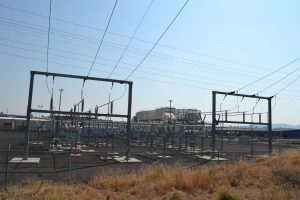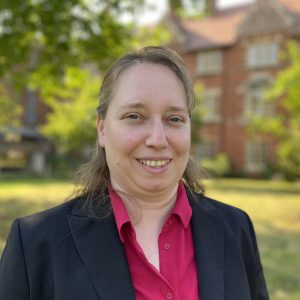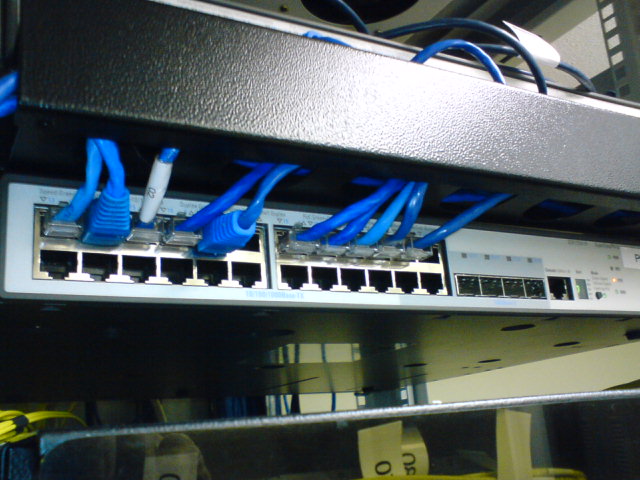We continue our series of introductions to our new Tutorial Fellows with a blog from Associate Professor Noa Zilberman.
Noa joined Somerville in 2020 as our new Fellow & Tutor in Engineering and as the University’s Associate Professor of Digital Electronics. She was previously Fellow and Affiliated Lecturer at Cambridge. Before entering academia, she had a 15-year career in industry, including as a Senior Principal Chip Architect for Broadcom.
She leads the Computing Infrastructure Group at the Department of Engineering Science, which pioneers the use of in-network computing to improve the processing of data on the web and reduce the need for data centres.
In this blog, she talks about how the stakes are high for their work, with urgent questions around privacy, climate change and building networks for the future all in need of solutions. The answer is deceptively simple in concept…
Think about a typical morning in 2021. You might wake up to an alarm from your smartwatch; turn on the heating from an app on your phone using your smart thermostat; and blearily ask your smart assistant ‘Hey, what’s the weather today?’
All of these activities use data from the cloud – but they also send data back, which is stored and processed in huge data centres around the world. The companies in charge of handling this data (such as Google, Microsoft, or Amazon) know exactly what you are doing, where you are doing it, and when you are doing it. This raises all kinds of dilemmas around matters of privacy and the way your data could be used, shared, or sold.
There is a significant environmental cost too. A staggering 20% of the world’s electricity is expected to be spent on data processing by 2025, and with Internet traffic tripling in the last five years the issue will get far worse without intervention.

20% of the world’s electricty will be used in data centres by 2025. Pictured: power lines supply a Google data centre in Oregon, USA
I am working on an alternative technical solution that reimagines our use of computing. This solution could cut data processing power usage in half, allow you to take control of your information; and drastically improve performance in the process.
Infrastructure is by its nature scalable. For example, consider road junctions. They scale from mini roundabouts, through box junctions with traffic lights, to interchanges and highly complex motorway intersections.
In today’s computing, however, your devices, such as tablets and laptops, connect directly to data centres. In road infrastructure terms, this is a little like leaving your driveway and heading straight onto a monster intersection. The only emerging alternative, edge computing, is the equivalent of the same intersection, but composed instead of a large amount of small roundabouts. More options are desperately needed.
My work uses in-network computing – moving data processing from data centres to the network – as a means to create the missing scalable computing infrastructure. Using the most common networking device, the switch, I am creating something akin to those different-size road junctions within the computing infrastructure to assist with data processing.
While typical processing devices, like the Central Processing Unit (CPU) in your computer, can execute complex instructions and load and store any type of programme, a switch is basically designed only to send data from A to B, with limited functionality. It can’t even multiply numbers together – but despite this lack of flexibility, we have been able to find ways to achieve computing tasks like spell checking every page on Wikipedia in just seconds, detecting malicious user activity, and even machine learning.
The potential benefits are enormous. Performance is up to x10,000 faster using in-network computing and power efficiency is x1,000 higher. We can effectively replace several racks full of servers in a data centre with a single device, saving a gigawatt/hour of power per year and making strides towards net-zero infrastructure.
There are further implications on privacy and your ability to control your data. We have so many devices at home that generate data that is processed by others now, ranging from lighting and heating to medical devices such as pacemakers. My solution aims to allow you to choose who processes your data, and where, just like we choose our broadband providers.
One of the things that we have learned over the past year is how critical is distributed computing infrastructure. Imagine the past year during the pandemic without being able to shop online; having video calls with your friends and family; or working remotely. The amount of data going through the network is growing with immense speed. This even before you consider the arrival at some point in the near-distant future of millions of self-driving cars needing constant, rapid data processing, which far eclipses what we can support today. I aim with my work to develop environmentally sustainable computing infrastructure that not only supports the technical needs of society, but also prioritises the wellbeing of the people using it.

